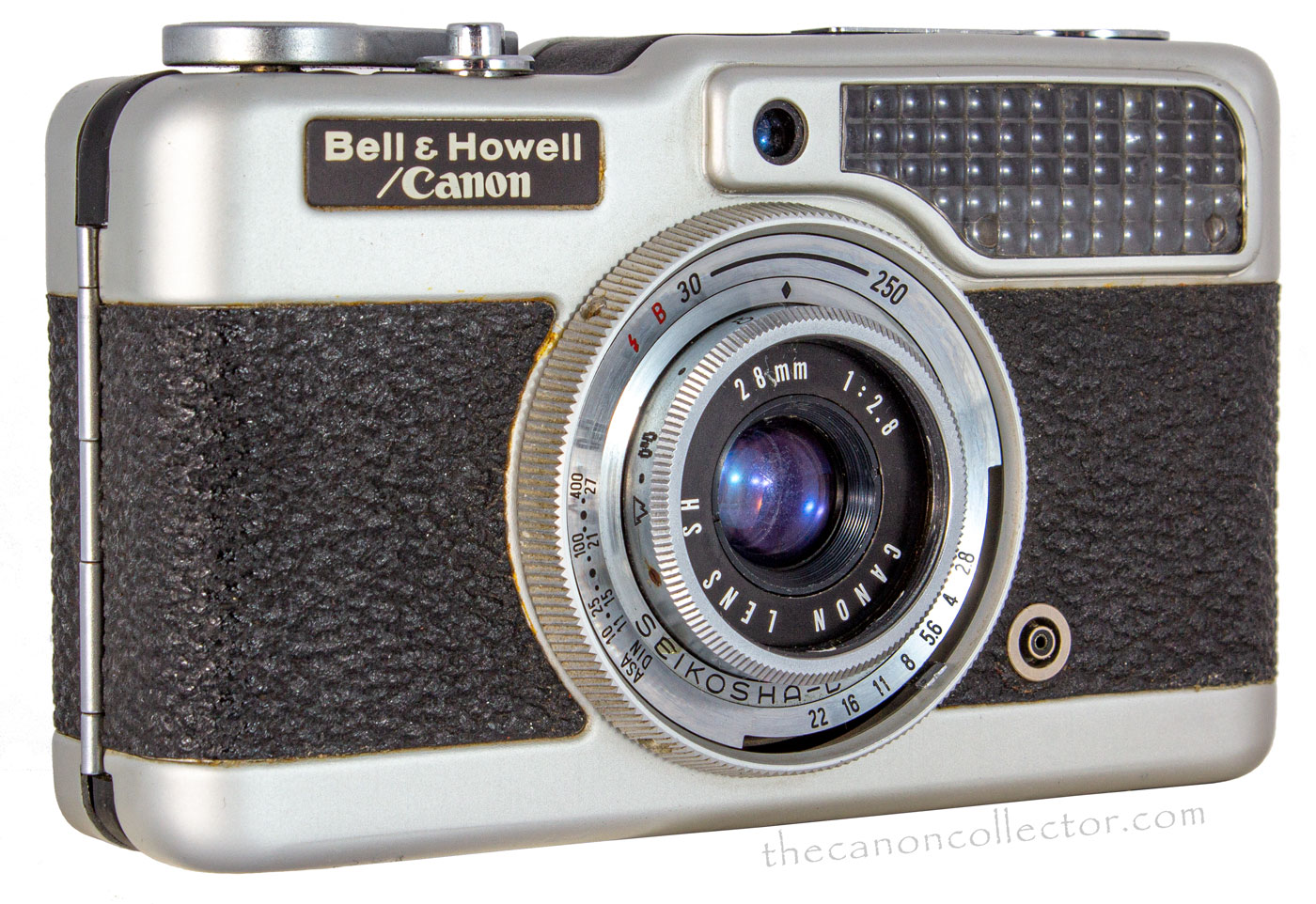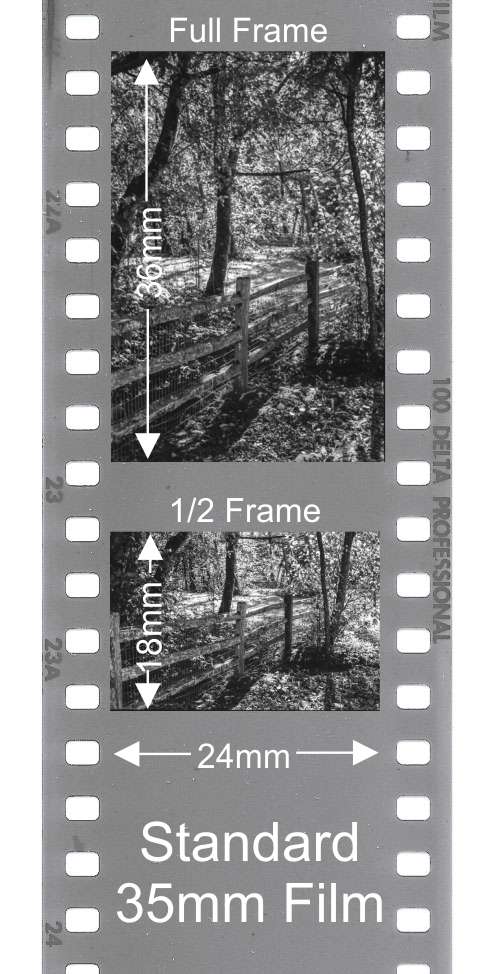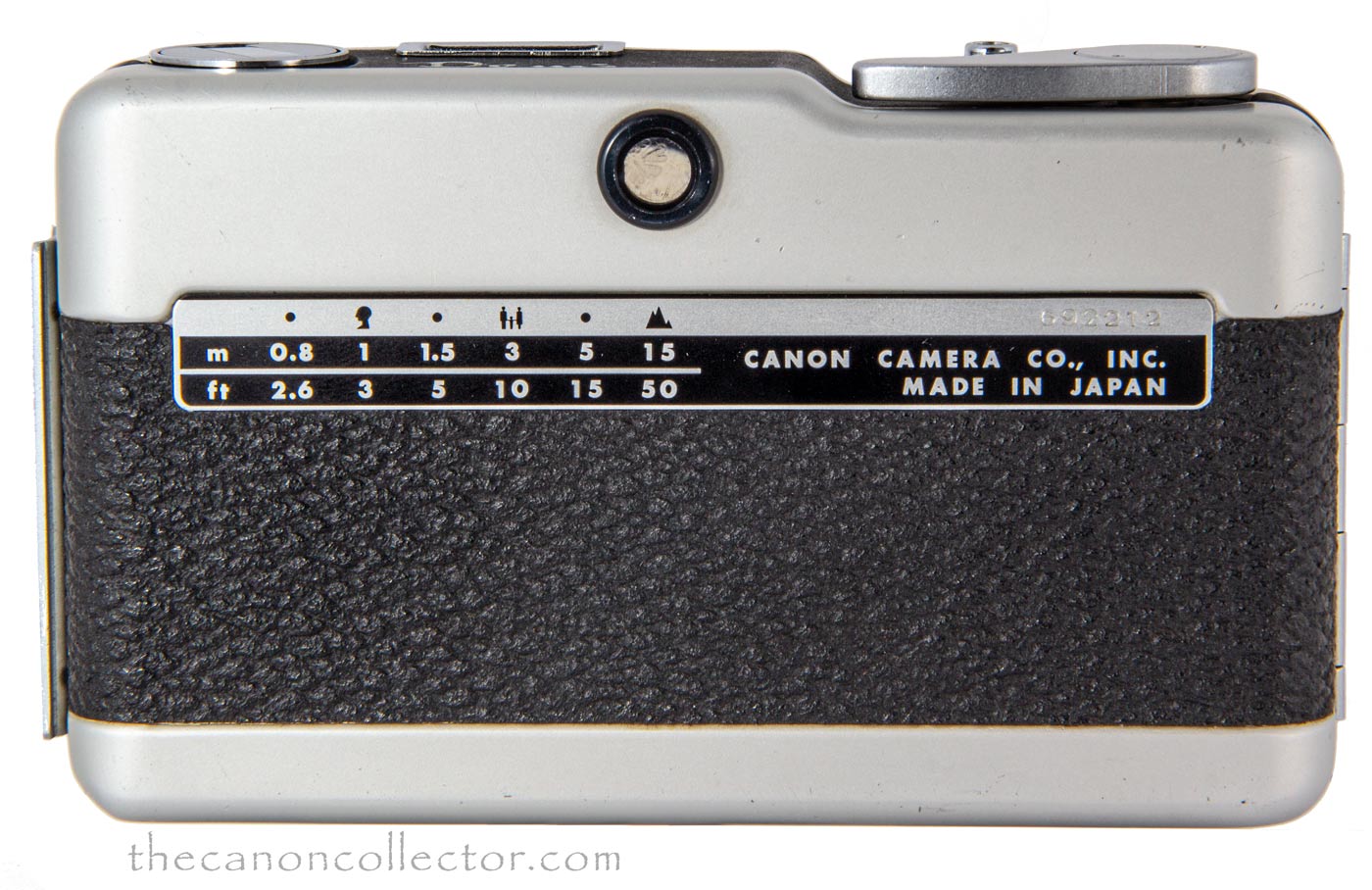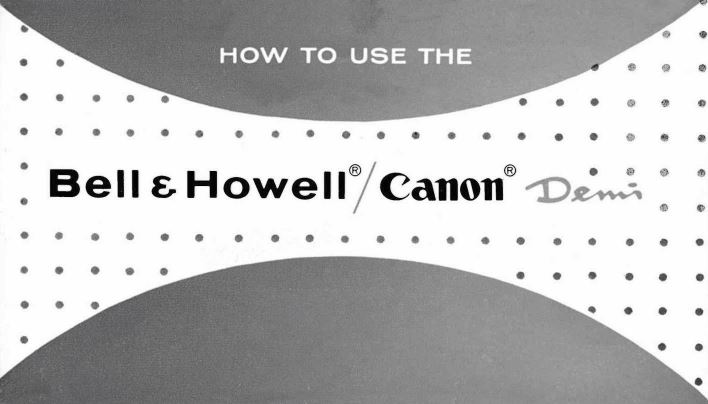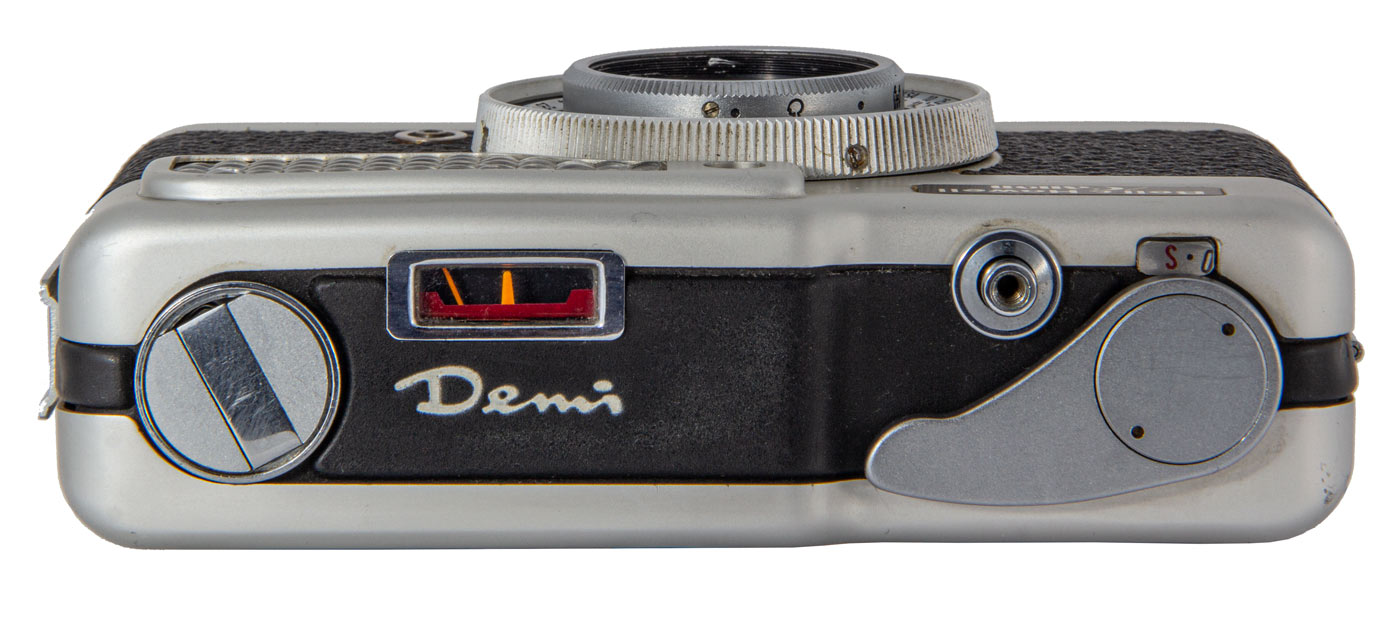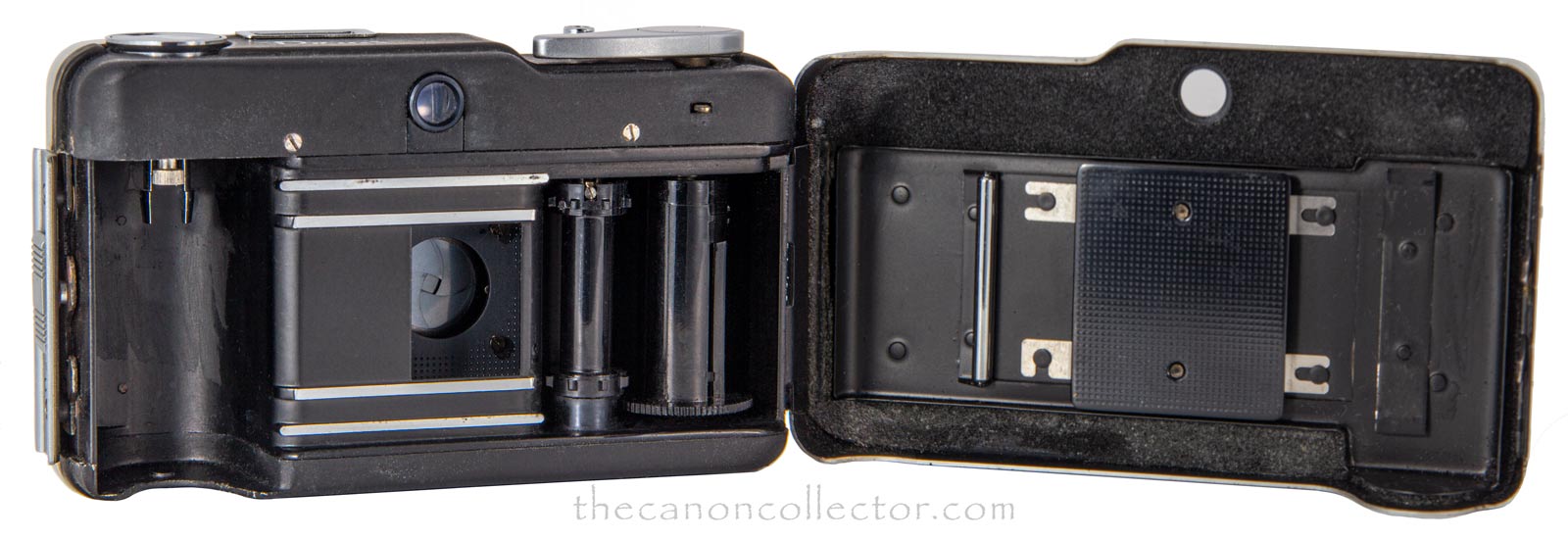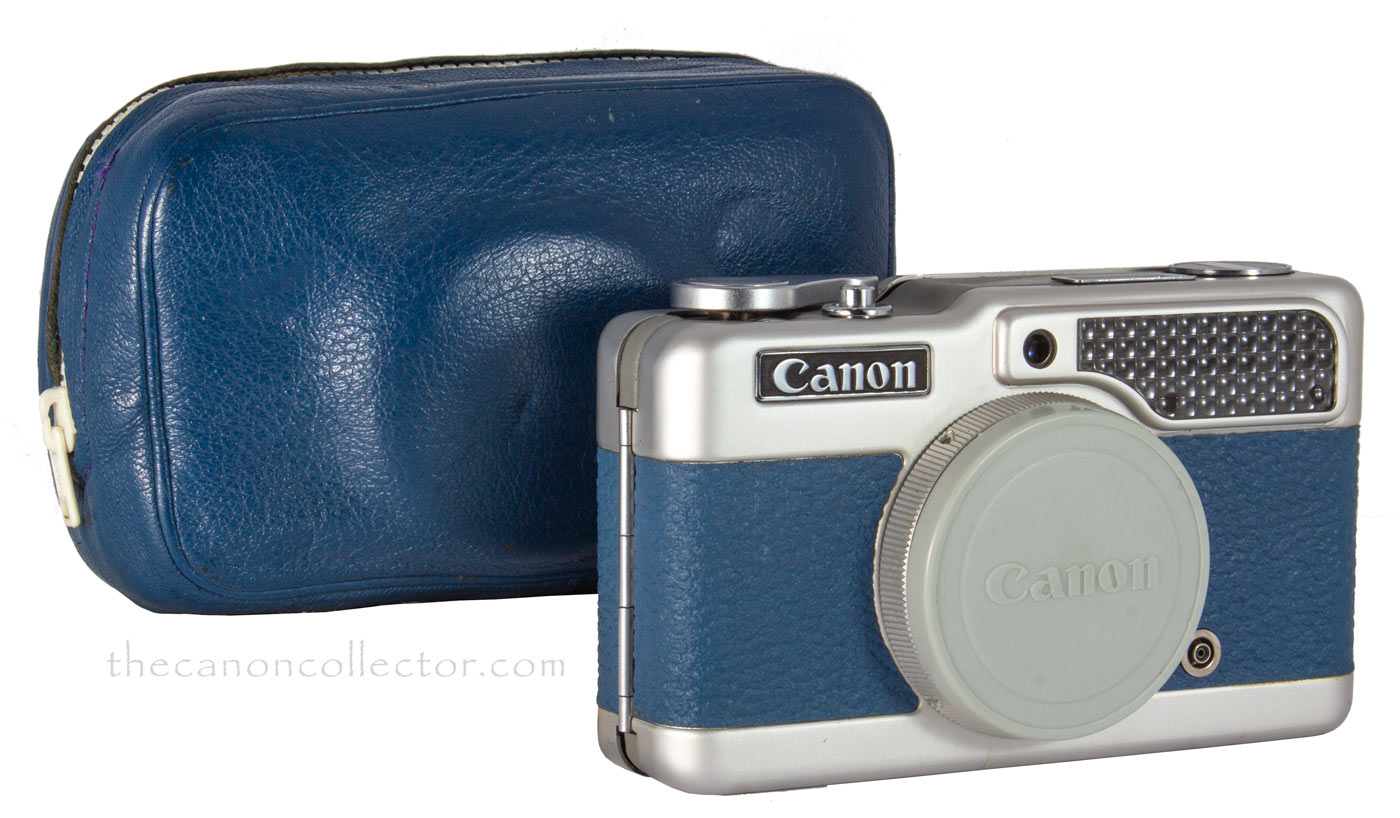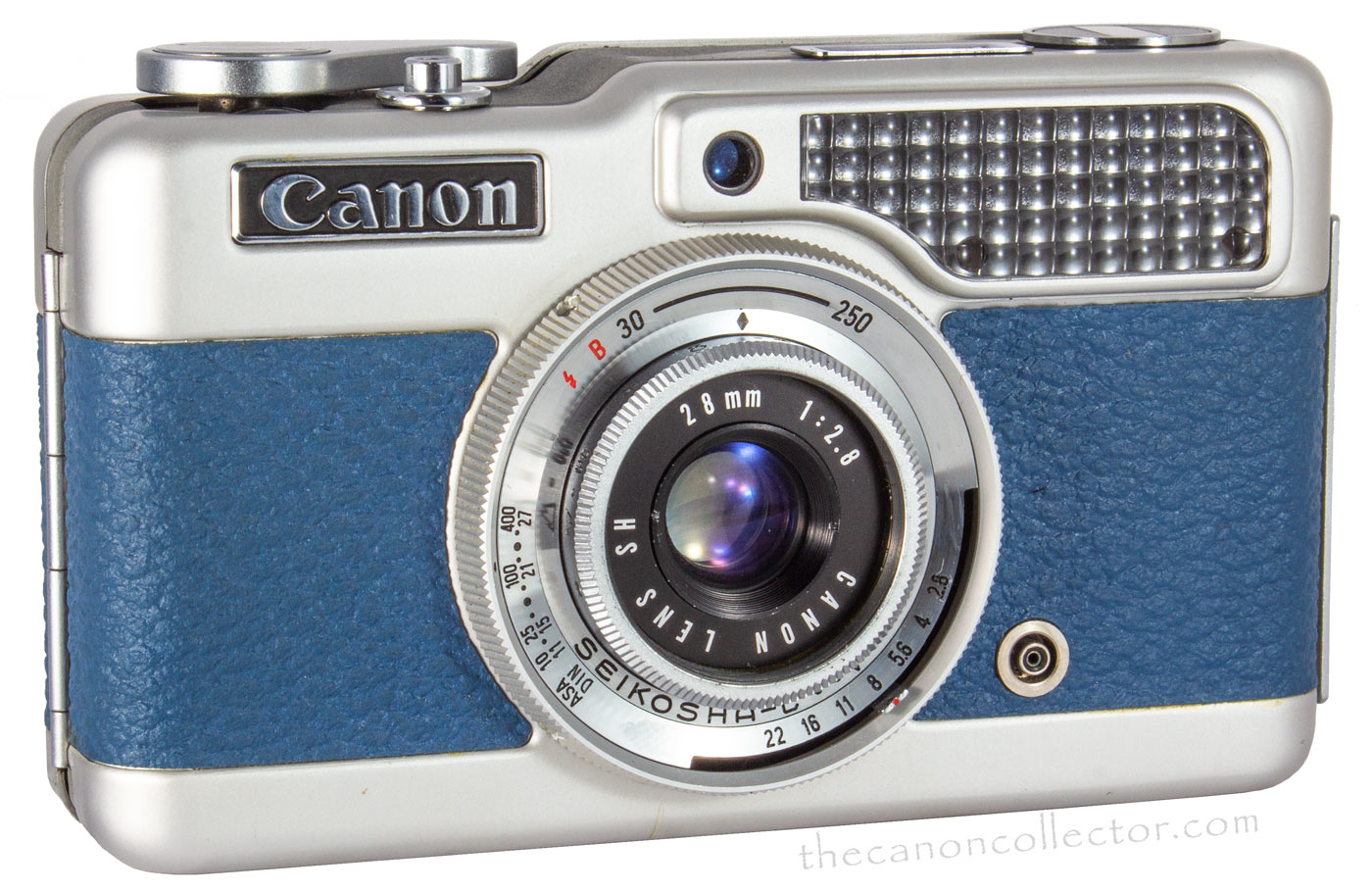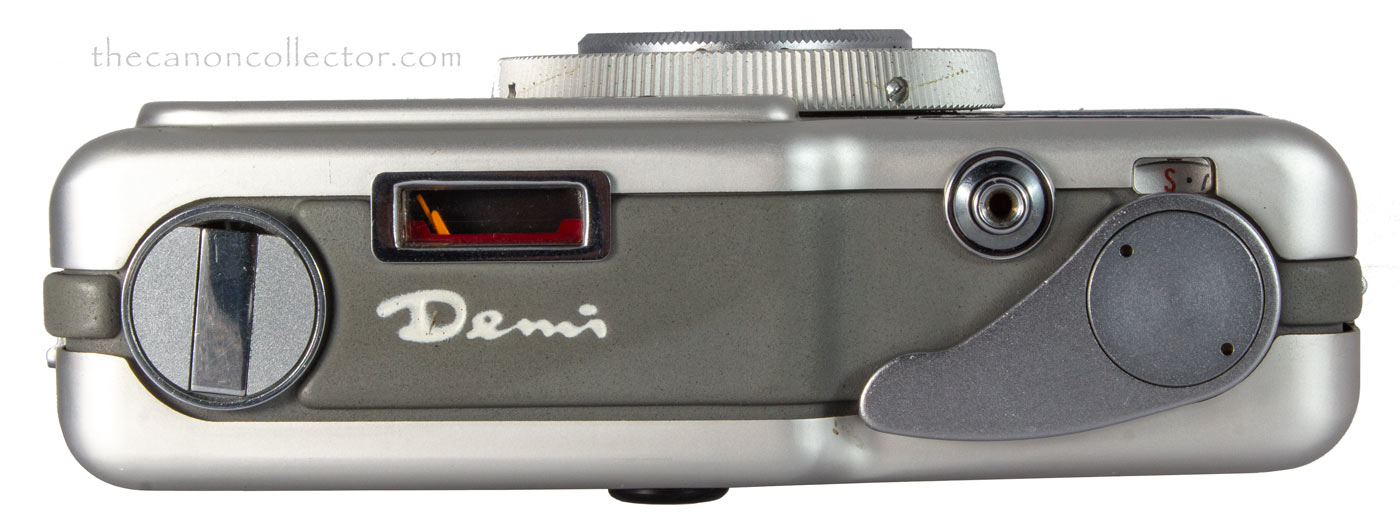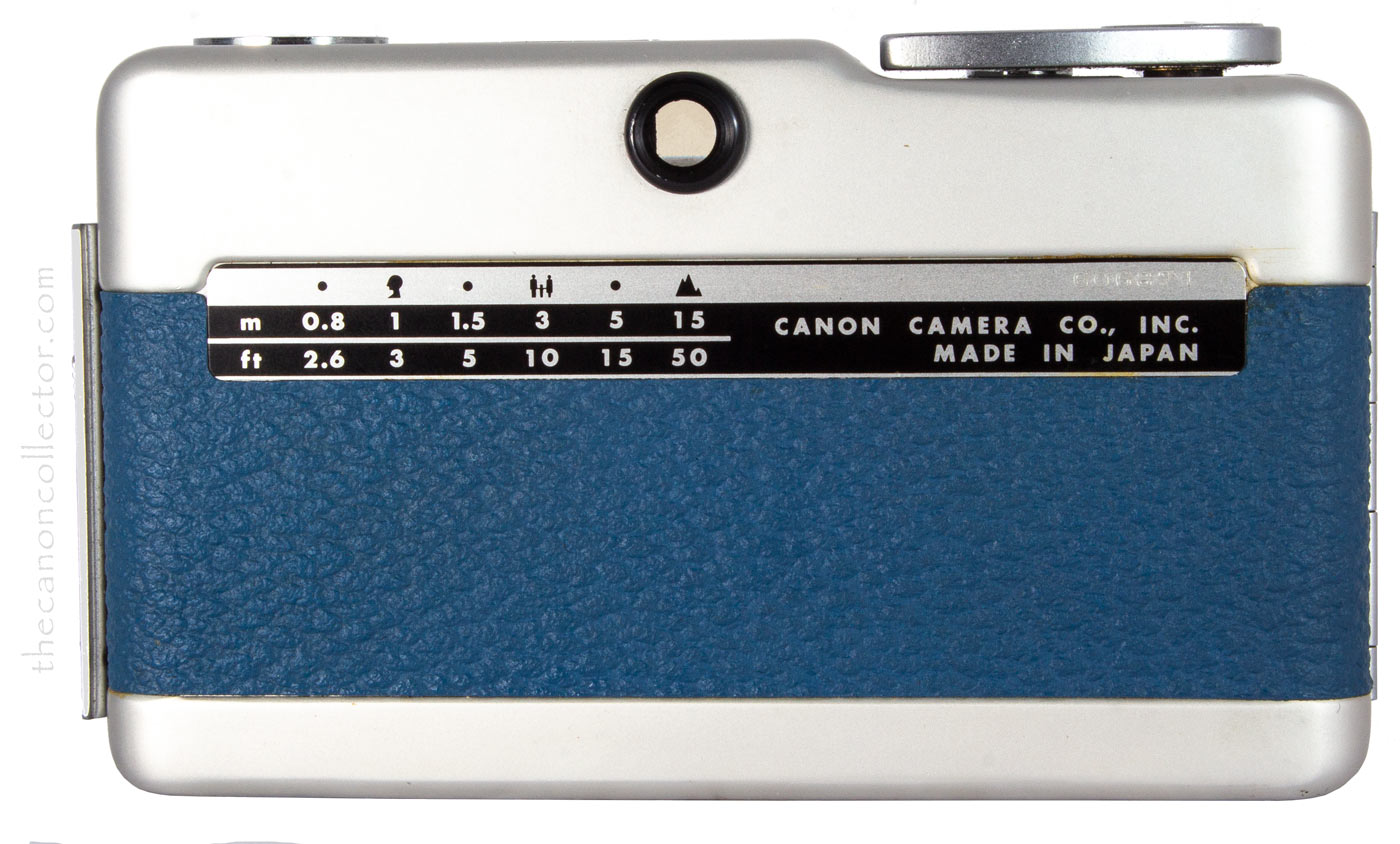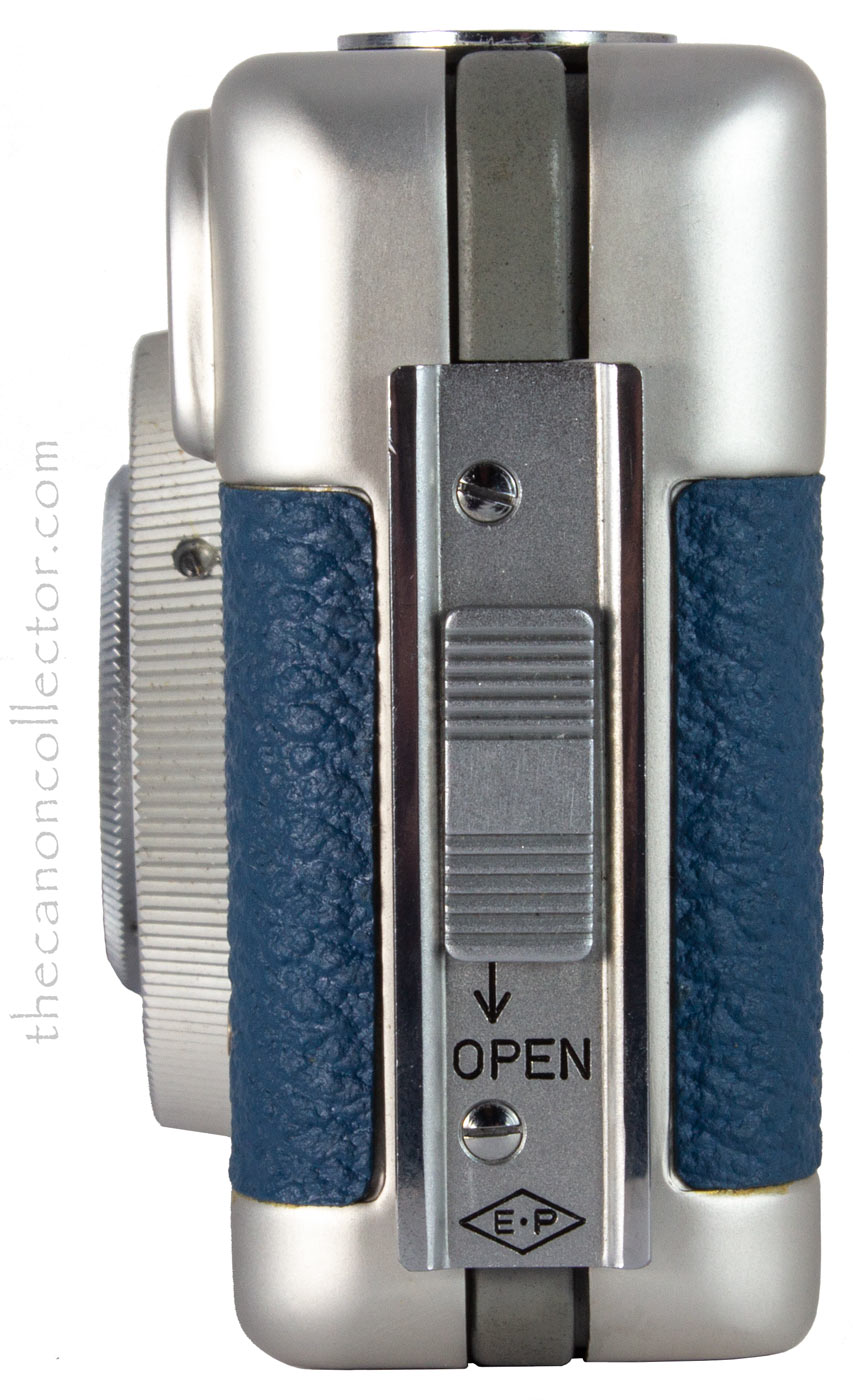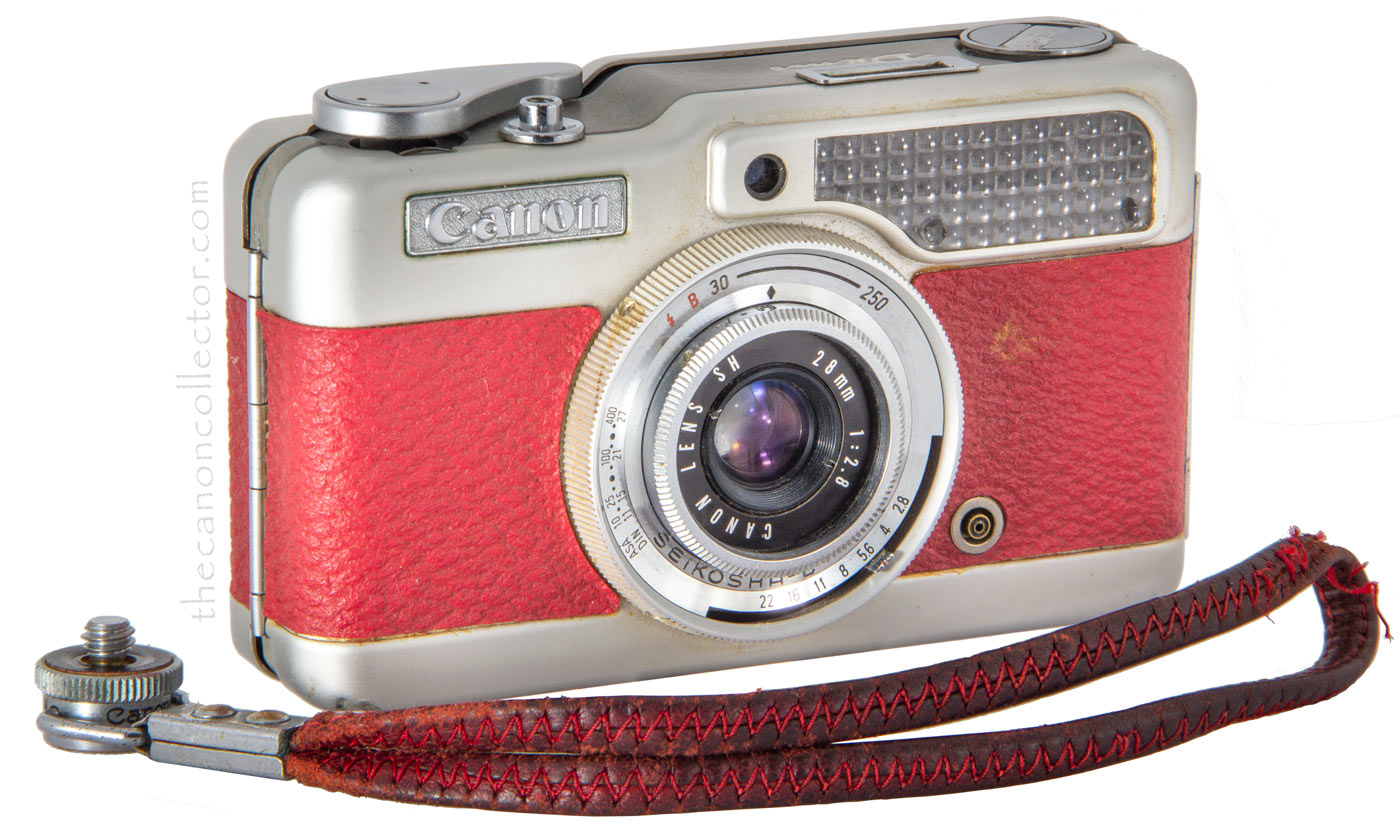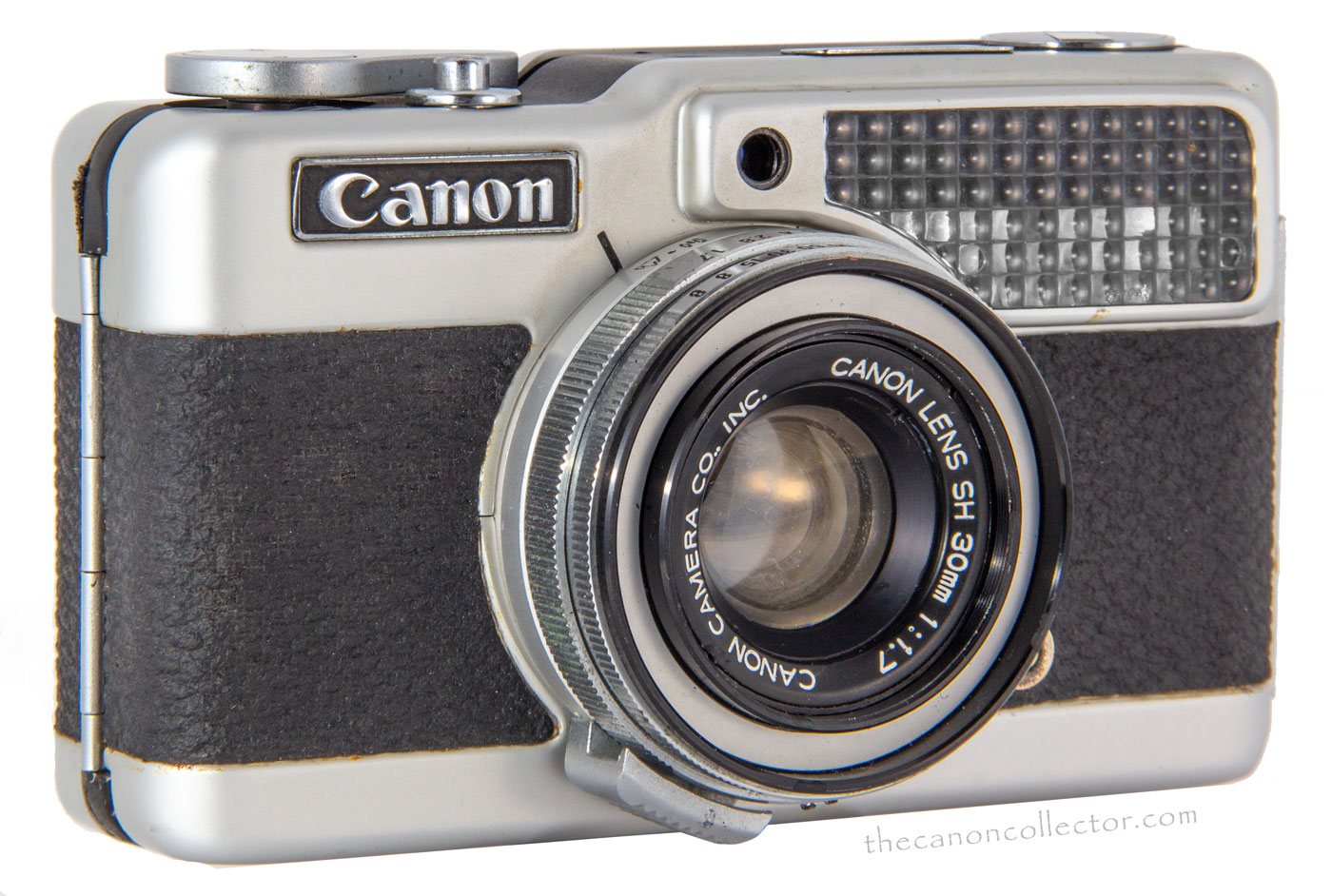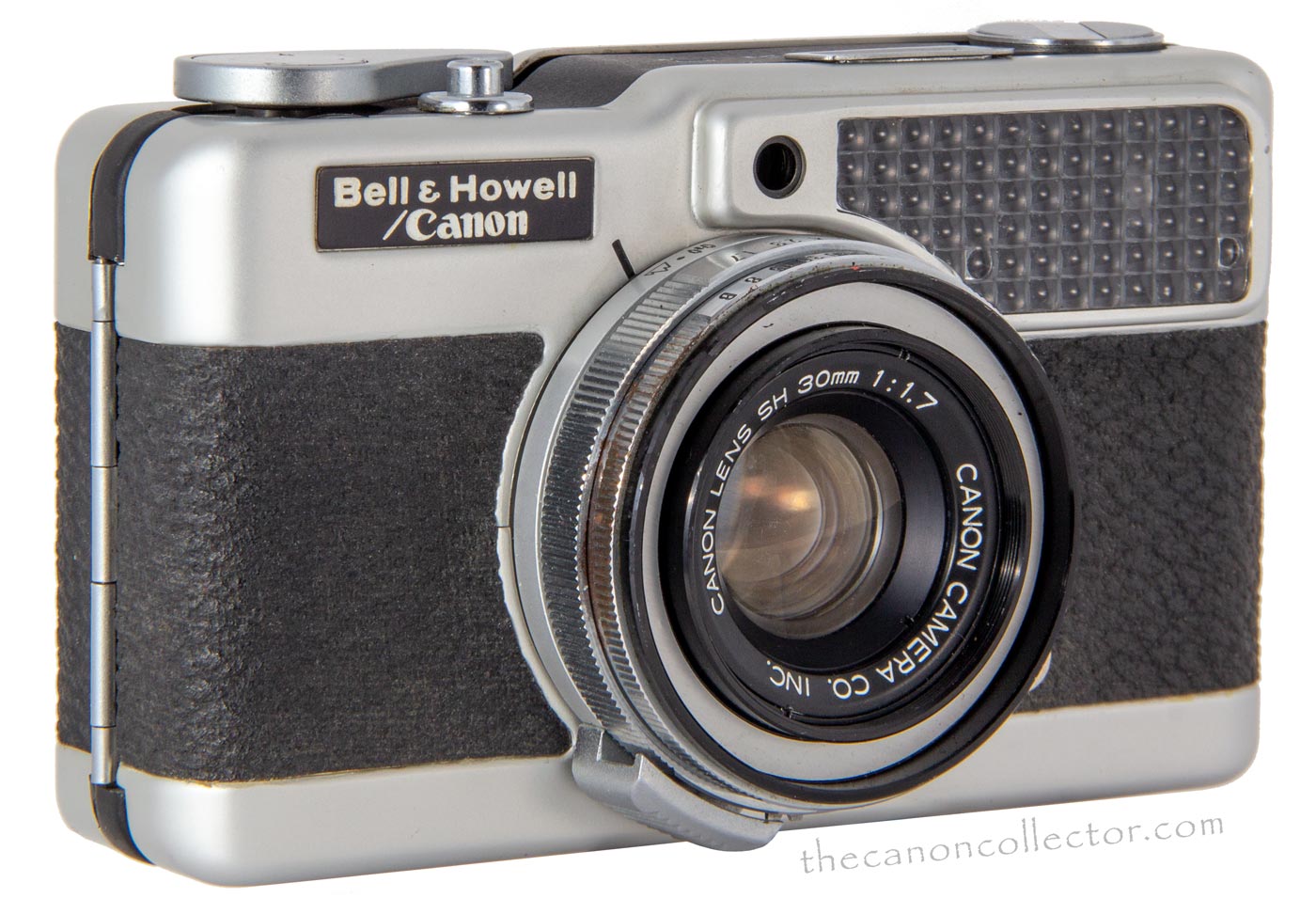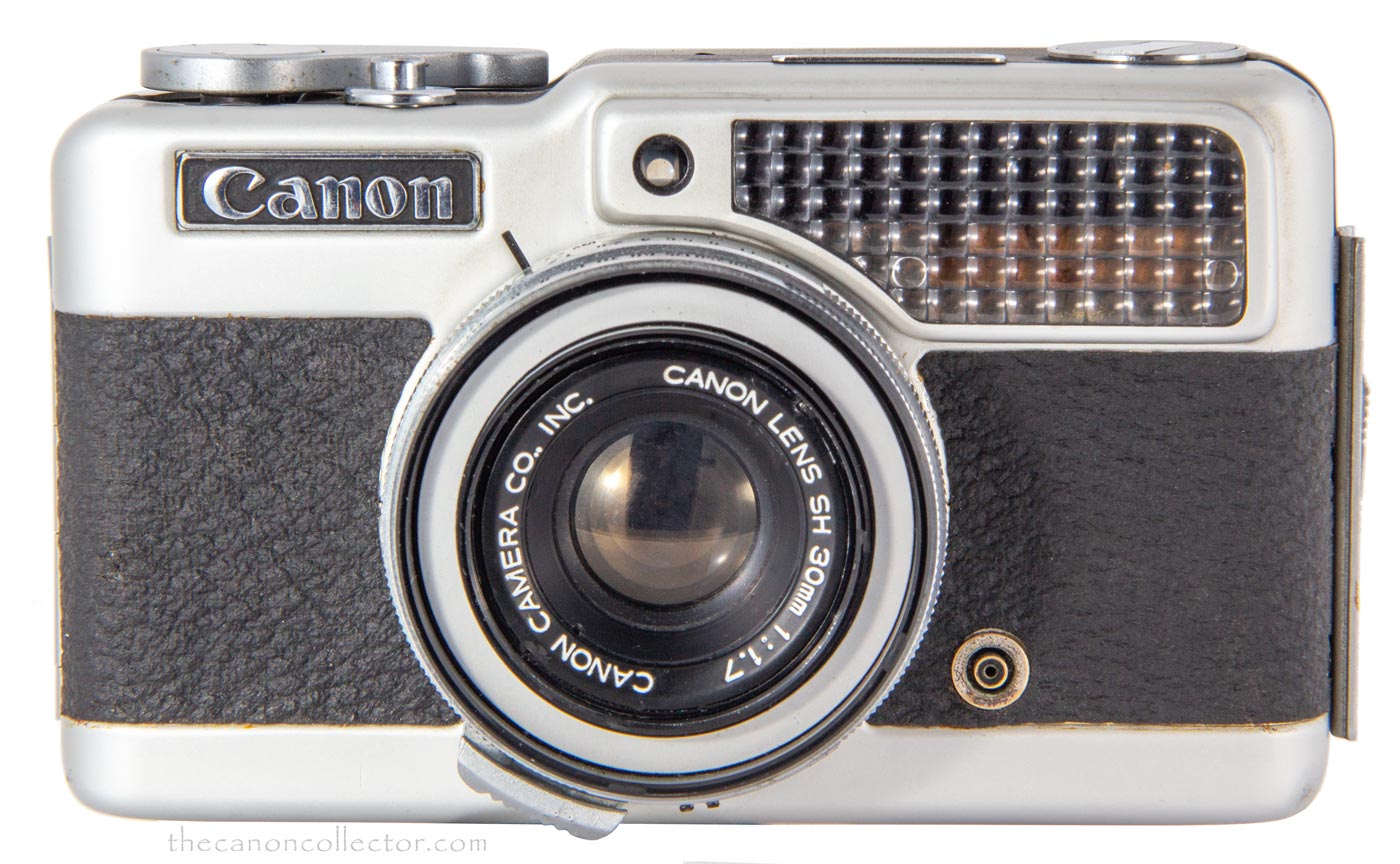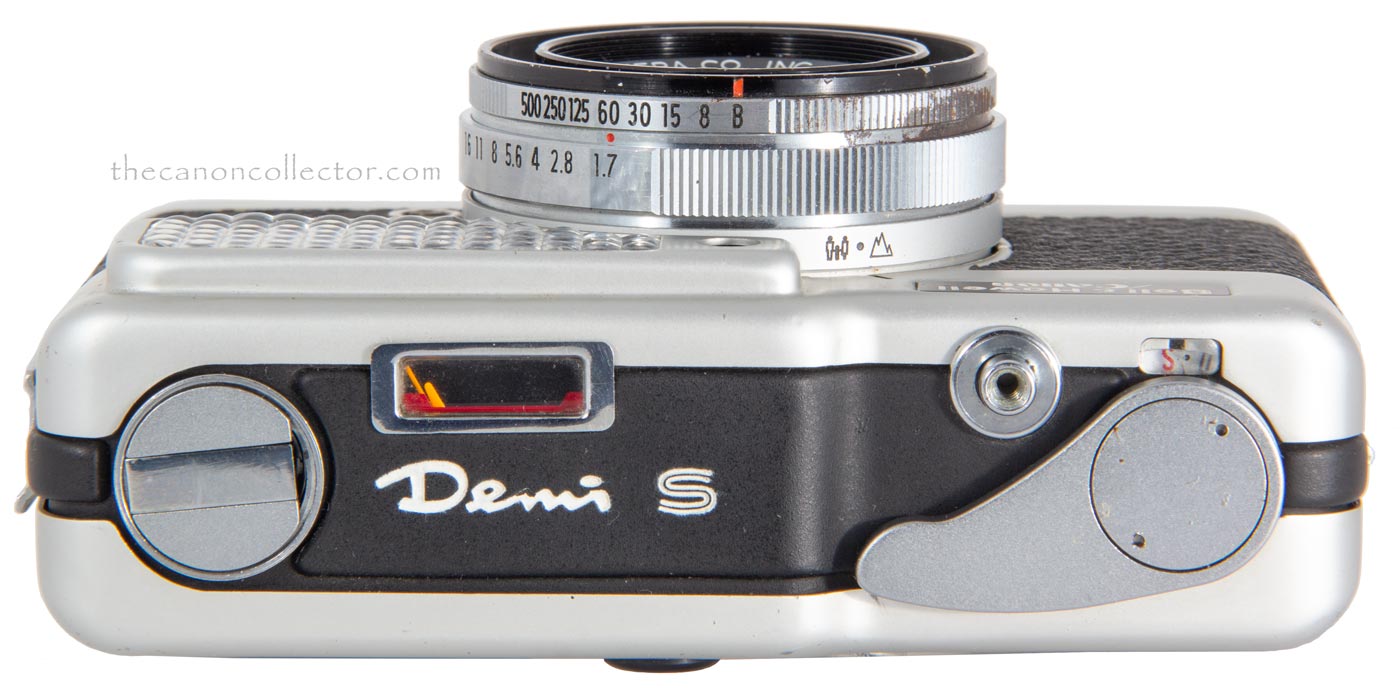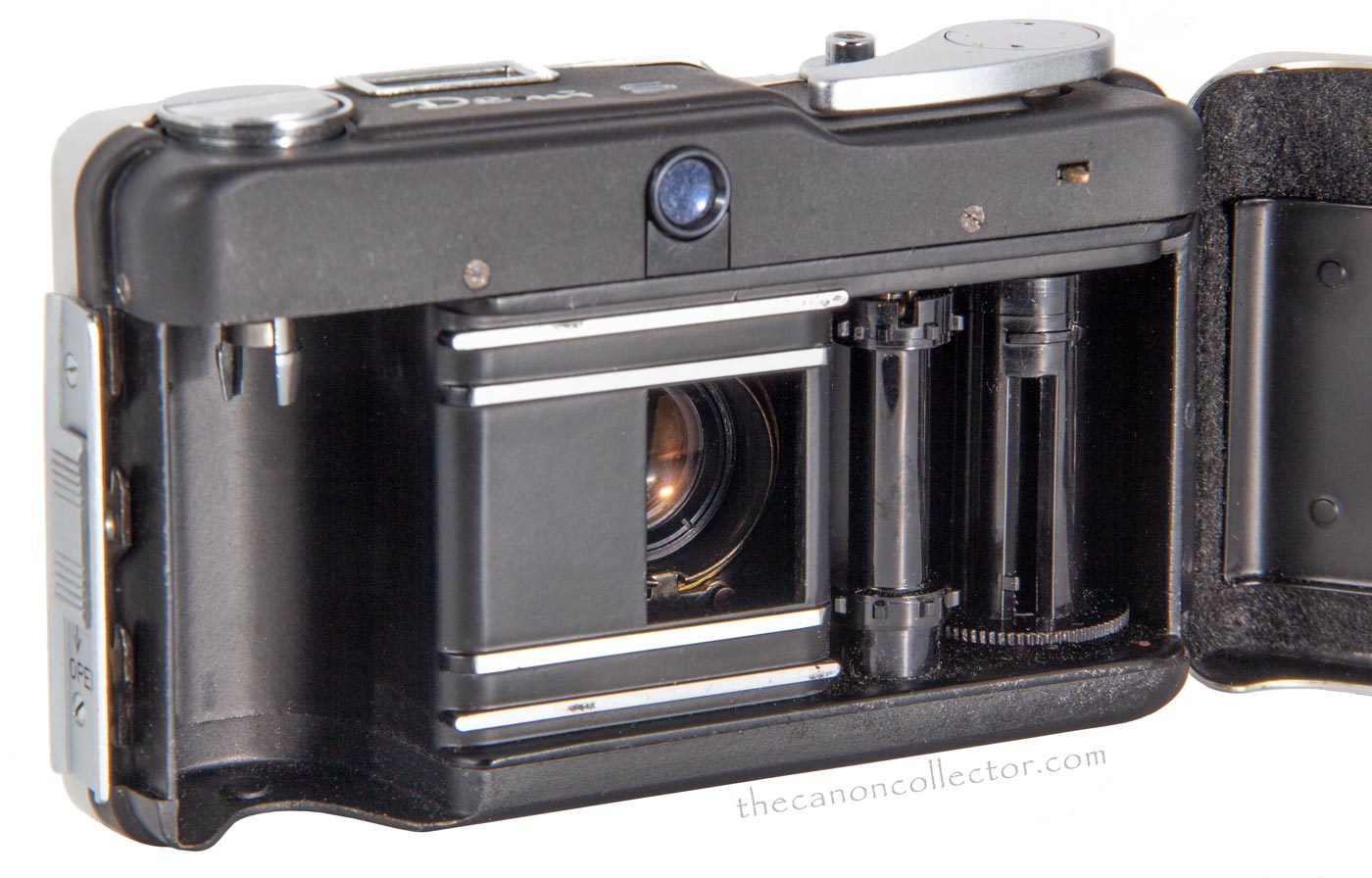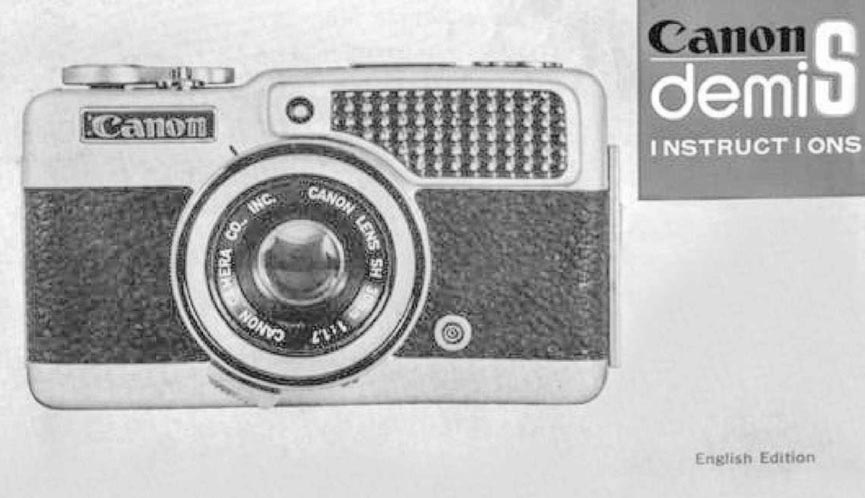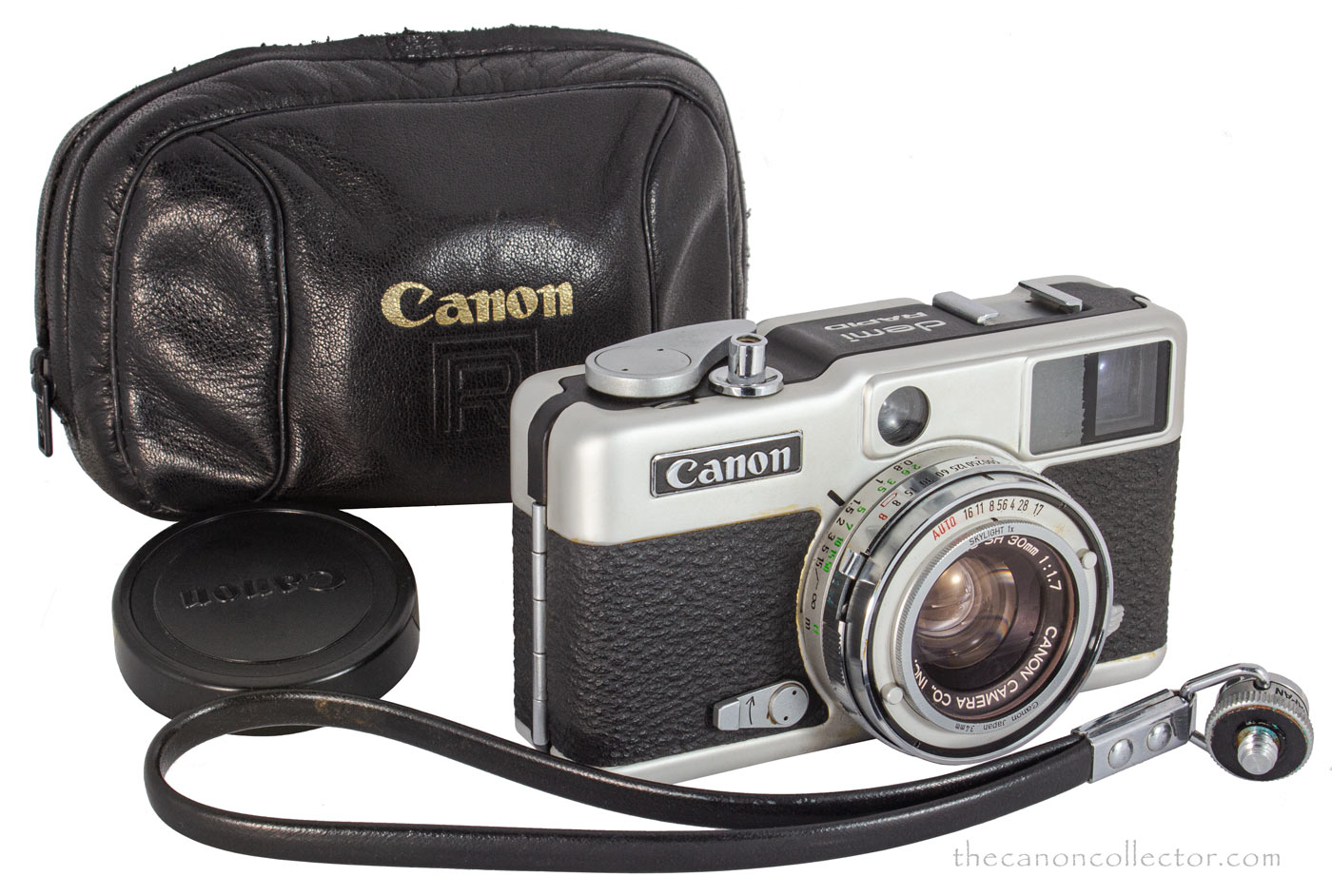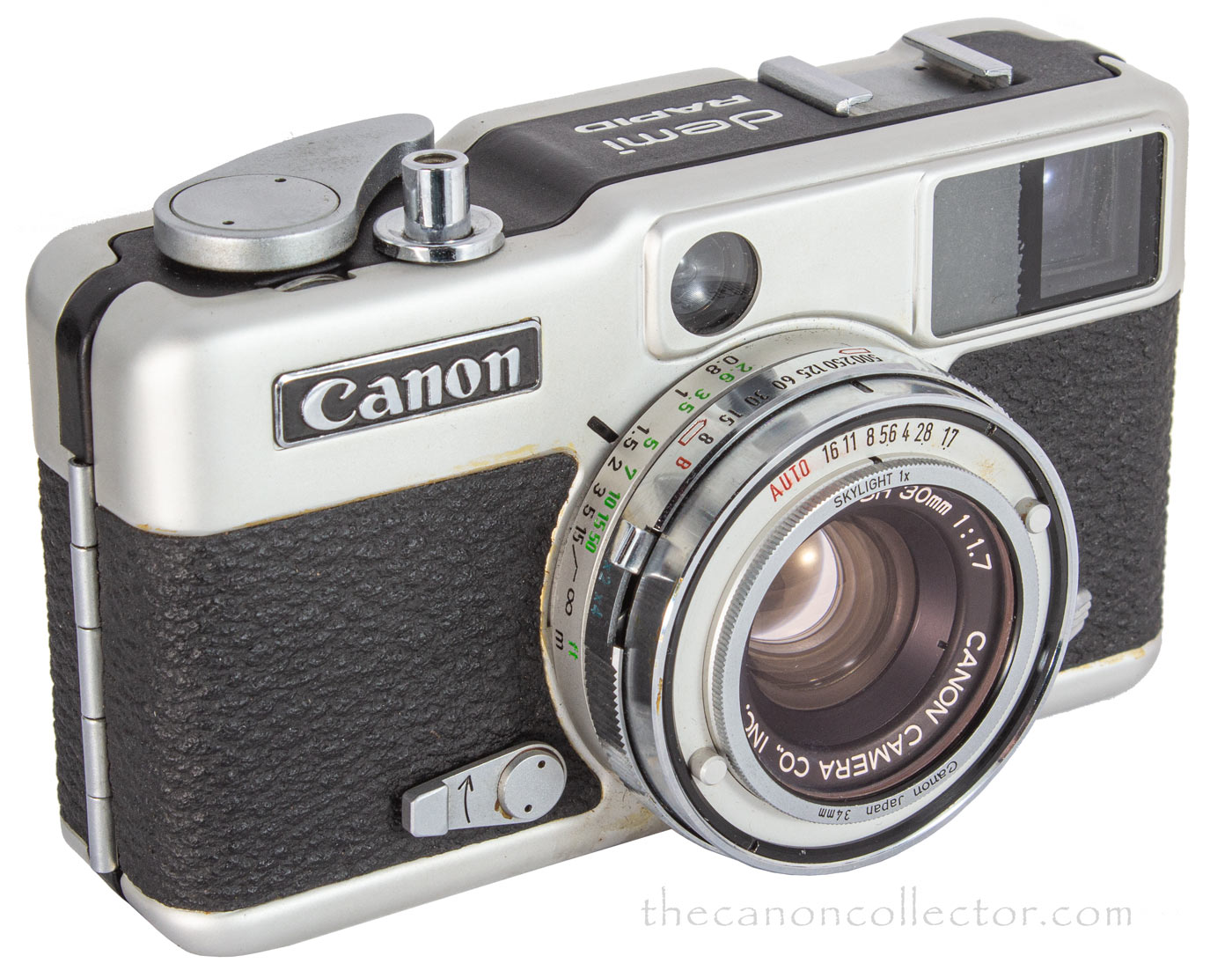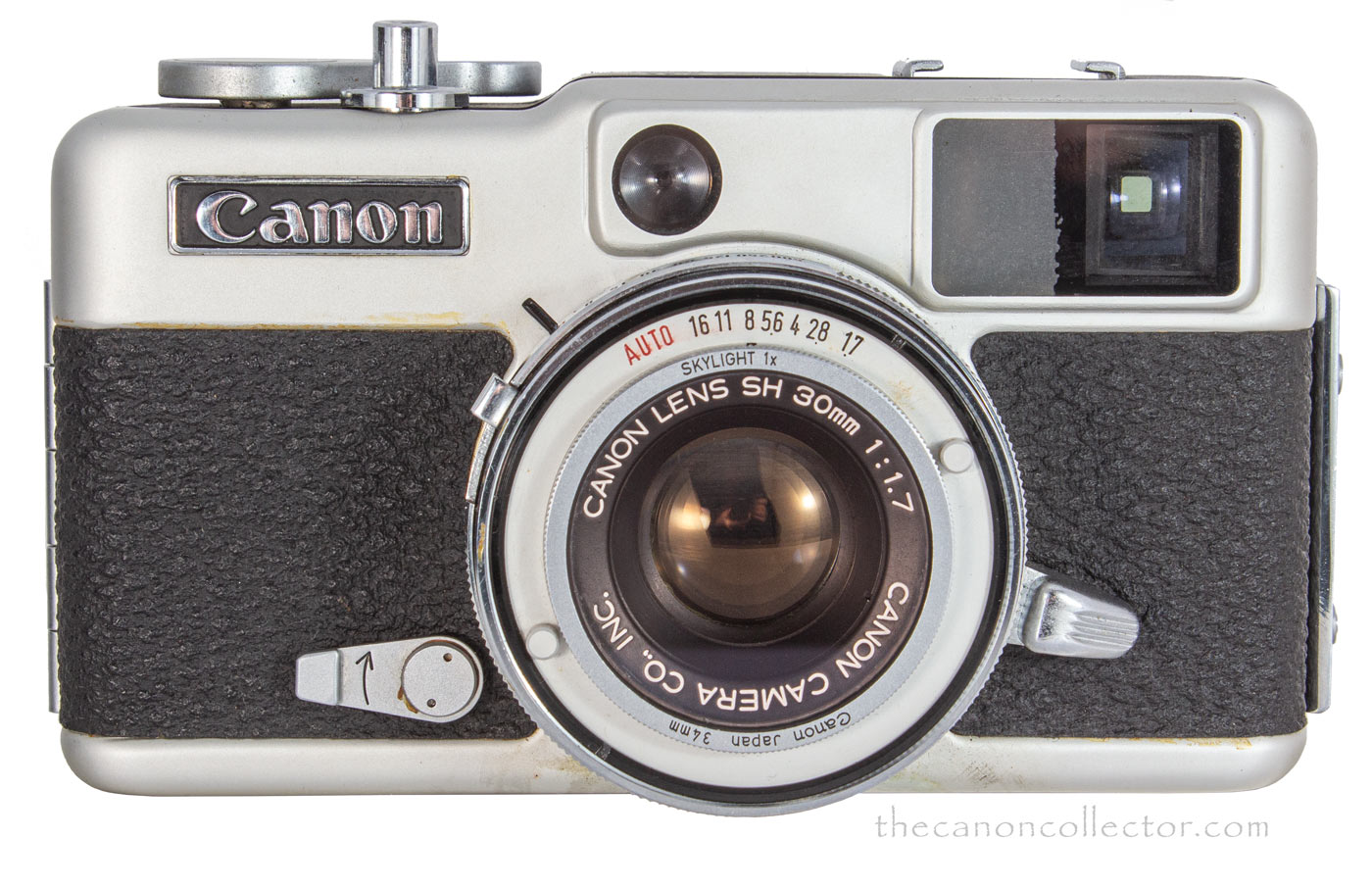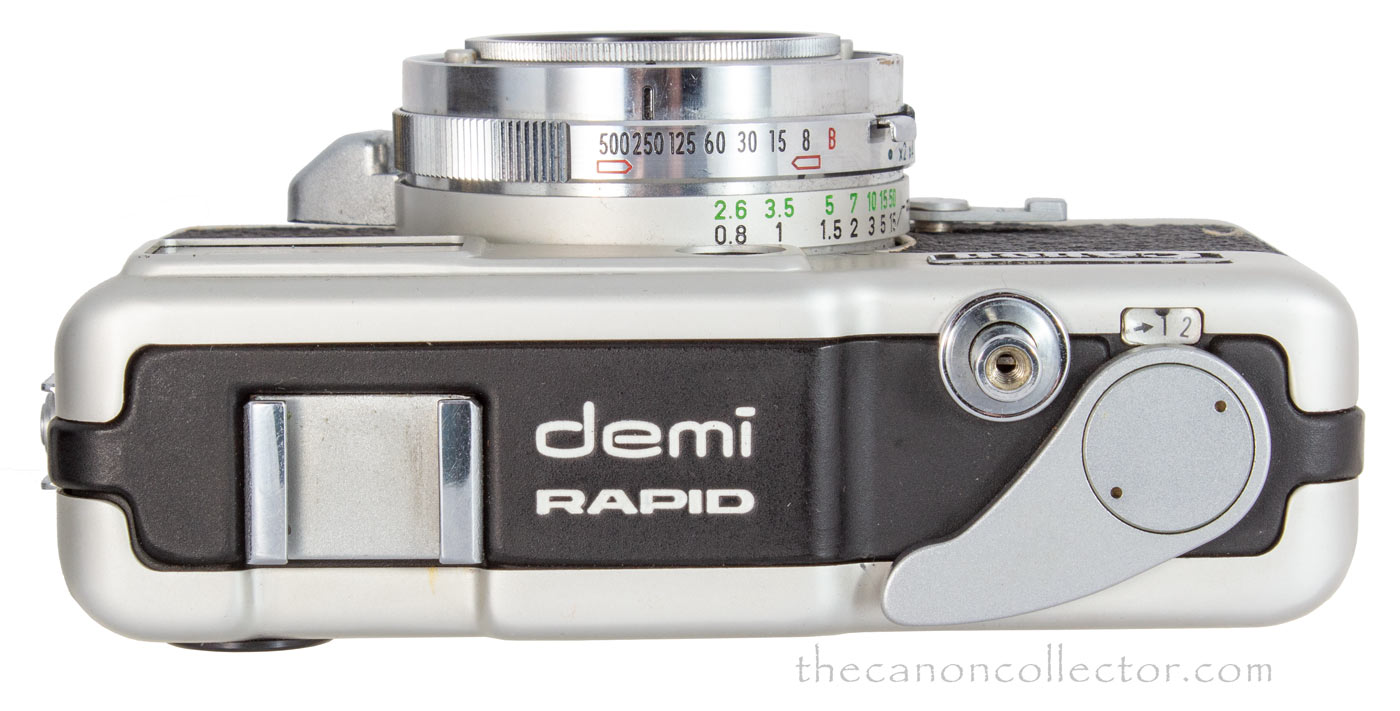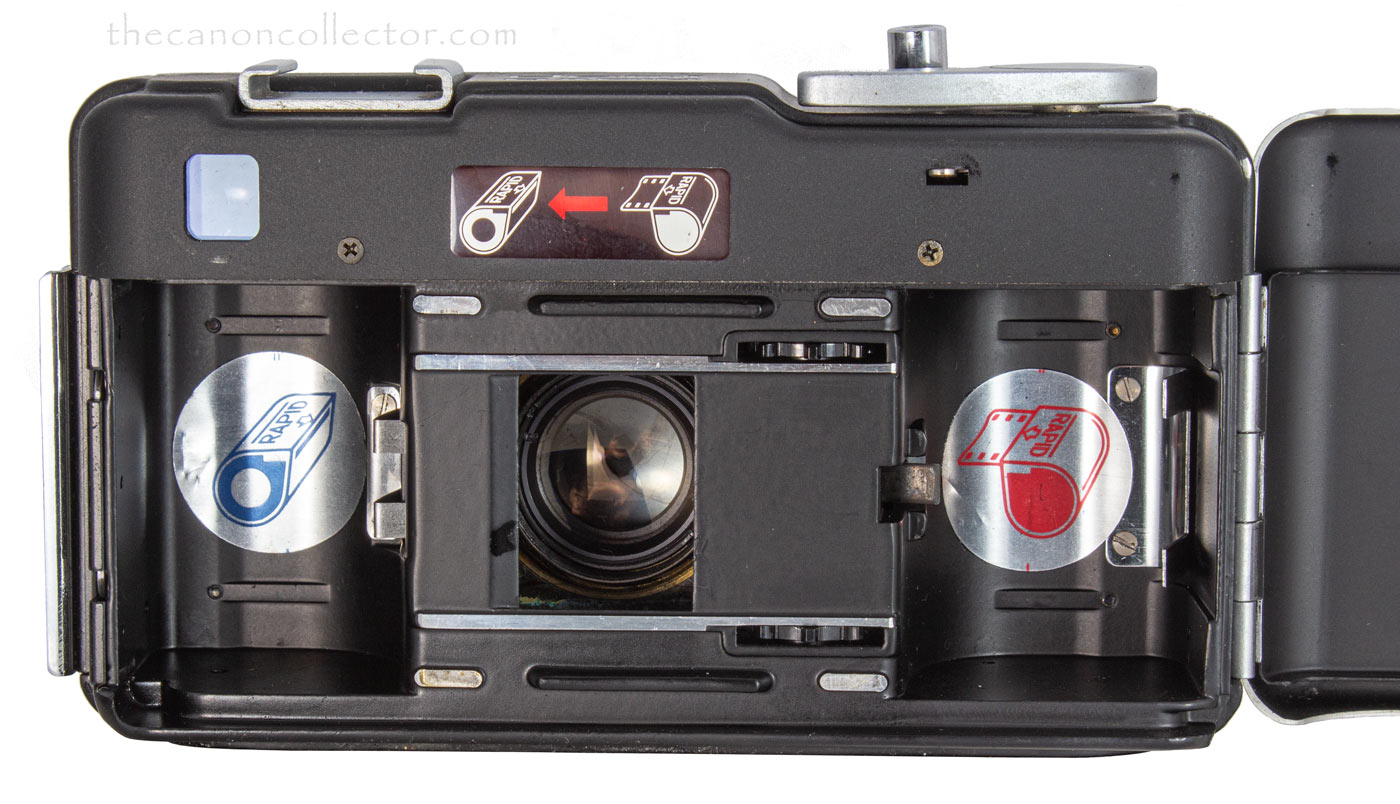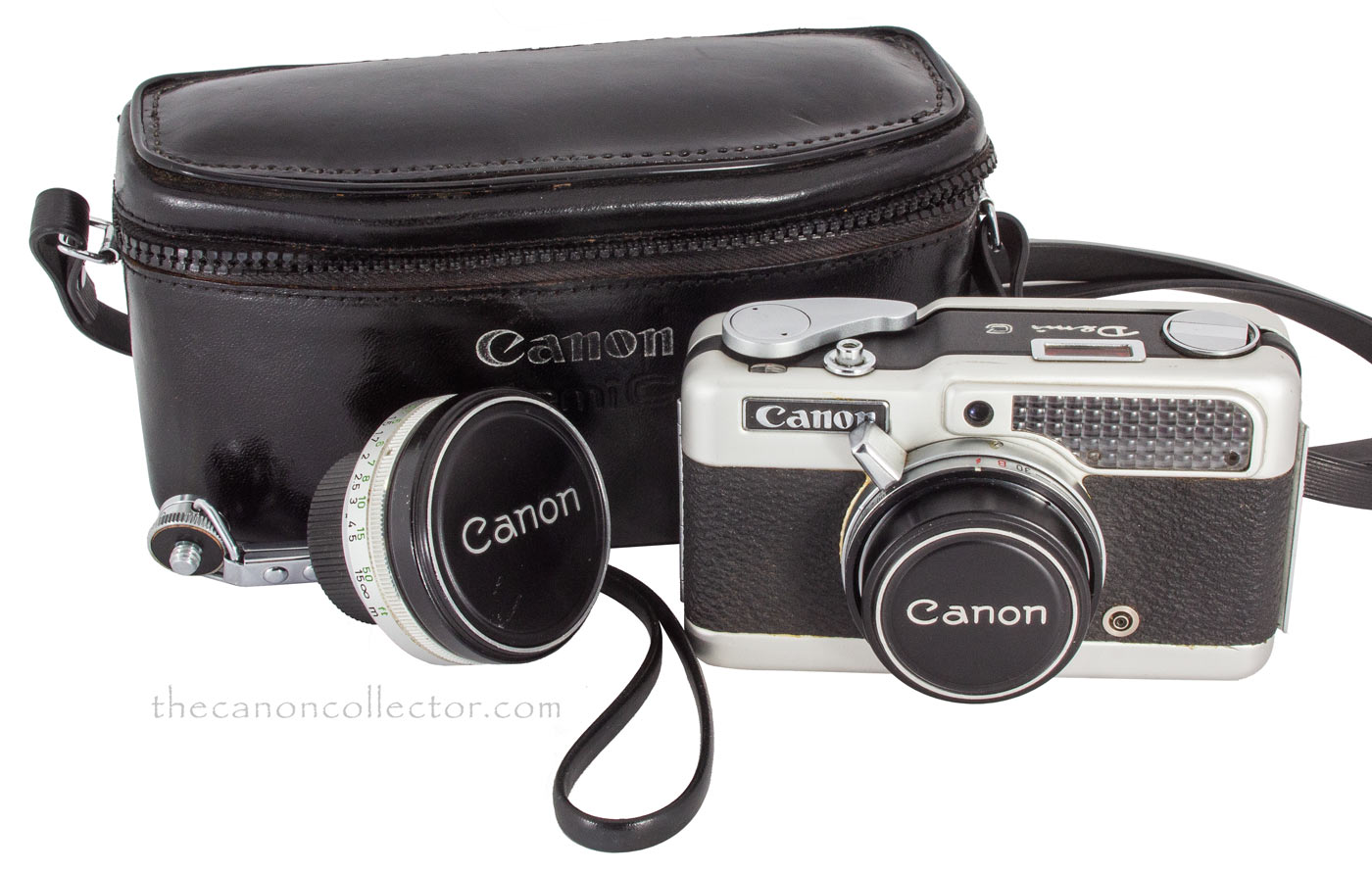The original Canon Demi was marketed, in the USA, by Bell & Howell and carried their name as well as Canon’s. It is the identical camera.
The Demi
The “Half-Frame” Camera
In the early 1960’s there was an interest amongst several camera manufacturers in creating smaller cameras for the entry level user that could be carried easily in pocket or purse. Remember, this was in the days of film and long before the smartphone. One way of reducing the camera size was to decrease the image size so that less room was required for the optics. One of the most popular formats was the “half-frame” which used standard 35mm
film but reduced the image by placing it sideways on the film as had been done many decades before at the dawn of photography.
Canon produced two lines of camera in this format, the Canon Demi and the Canon Dial. But before we get into the cameras we should really have a look at the history of the “half-frame” format and other reduced format approaches.
35mm film was initially developed for motion pictures. George Eastman was working on a moving picture machine called a Kinetoscope in the late 1880’s to the 1890’s. At that time there were no movie films or theaters and a moving picture was a novelty. The Kinetoscope was a wooden box with a view port and for a nickle you could watch a short movie on a continuous loop of film. Such are novelty items!
The first samples of film were split from 70mm film stock but the actual width of the result is unknow. By 1889 a width of 35mm, 1 3/8 inches, with the 18 x 24mm image fitting cross ways on the strip was settled on and remained unchanged into our own day. There were perforations down both sides, four holes to each image. The holes were a bit smaller than used today but otherwise the 35mm film size has not changed since.
The first 35mm film still cameras ran the film vertically, just like a movie camera, and used the movie camera image size. When cameras were finally developed that used the film horizontally, such as the Leica camera of Oskar Barnack, the image lay along the film and not across it. The image size became standardized at 24 x 36mm and was called “double-frame” because the image measurement was double that of the original movie film frame.
Over decades of use these names were forgotten and the horizontal format came to be called “full-frame” 35mm. So in the 1960’s when cameras were made that once again placed in the image across the film strip, an image of 18 x 24mm, or close thereto, they were called ½ frame cameras.
The first Japanese ½ frame camera was the Olympus Pen released in 1959. It used standard 35mm film in a 135 can. Canon followed suit with its Canon Demi, the original model, in February of 1963. These cameras were small and easily carried and they became very popular.
Smaller cameras required reducing the size of the image area. Kodak’s solution was to introduce the 126 cartridge film in 1963 for its Instamatic cameras. The film was 35mm as before but the image area was 28mm square but with masking in the camera and processing machines it actually came out closer to 26 x 26 mm. There were no perforations along the sides but there was one Registration Hole beside each image which the cameras used to position the film. The format was smaller and because rewind of the film was not required the cameras had fewer parts. It all led to a smaller camera. Kodak 126 film was finally discontinued in December of 1999.
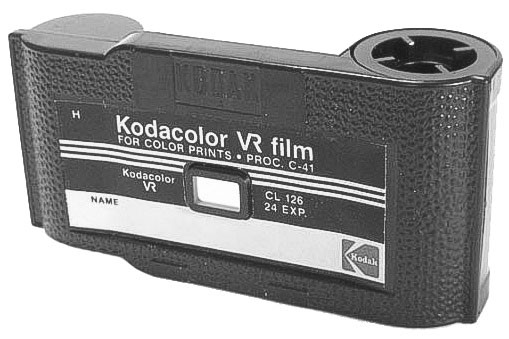
The Kodak
126 “drop-in” cartrdge.
The Kodak cartridge is not really relevant to our conversation except that to compete with Kodak’s 126 cartridge film Agfa in Europe introduced the Agfa Rapid Film System in 1964. Film came in a can similar to a 135 film can but without a spool and it was wound into an identical empty can on the other side of the camera. Film was not rewound but remained in the second can until it was developed. Because the winding process did not use spools and there was no necessity for film rewinding the camera mechanism was simpler and therefor smaller. Several camera manufacturers, including Canon, made cameras that used this system.
As we look at the Demi cameras the relevance of this little bit of history will become apparent.
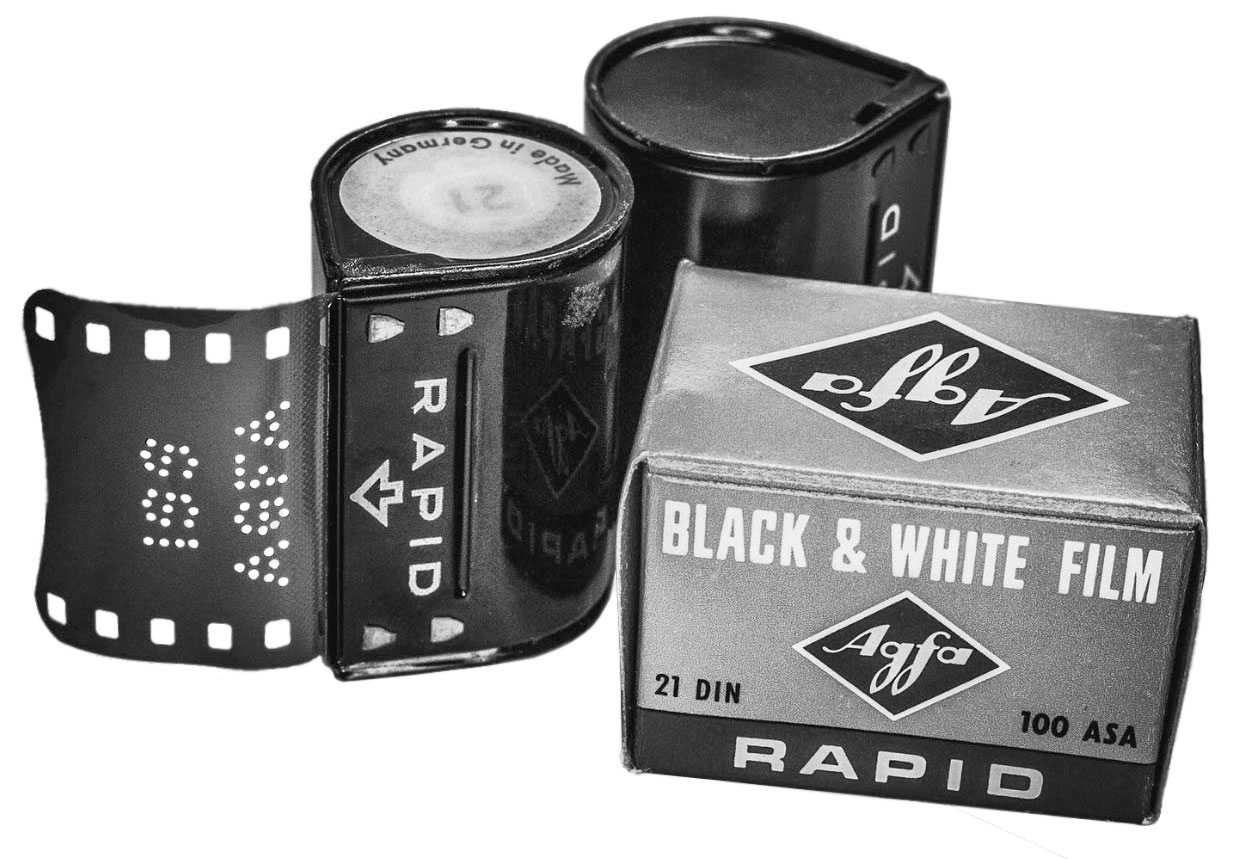
The Agfa Raid Film System cartridge.
The Demi Cameras by Date of Introduction
Canon introduced six versions of the Demi camera between February of 1963 and April of 1967. There were a couple of minor variations that were essentially the same as other models. These were popular cameras in their day which explains why so many of them are still seen in yard sales, thrift stores and on tables at camera shows. All of these cameras are set out on the chart below.
| Camera | Introduced | Lens | Focus Mode | Meter | Battery |
| Demi (Original) – Black | February 1963 | SH 28mm f/2.8 | Zone | Selenium | None |
| Color Demi – Blue | October 1963 | “ | “ | “ | “ |
| Color Demi – White | “ | “ | “ | “ | “ |
| Color Demi – Red | “ | “ | “ | “ | “ |
| Demi S | September 1964 | SH 30mm f/1.7 | “ | “ | “ |
| Demi C | April 1965 | SD 28mm f/2.8 | “ | “ | “ |
| “ | “ | SD 50mm f/2.8 | “ | “ | “ |
| Demi Rapid | June 1965 | SH 30mm f/1.7 | Scale | CdS | 1.3vv px625 |
| Demi EE17 | May 1966 | “ | “ | CdS | “ |
| Demi EE28 | April 1967 | SH 28mm f/2.8 | Zone | Selenium | None |
The (Original) Demi
Canon introduced the original Demi camera in February of 1963. This was four years after Olympus had released the Olympus Pen “half-frame” camera.
The Demi ran the film horizontally through the camera but images were placed across the film, as in the diagram above, so that the camera held horizontally took a vertical or portrait format image. To compose a horizontal image the camera had to the held on its side.
This is very much an entry level user camera. The lens was the SH 28mm f/2.8 which had five elements in three groups which was able to create a decent image. However, it was manual focus and there was no rangefinder. To focus the camera you turned the lens to different symbols for different ranges and there was a table on the back to translate the images into feet or meters.
The aperture and shutter speed are synchronized. As you turn the shutter speed dial it travels from F/22 at 1/250th to f/2.8 at 1/30th. The meter has a readout on the top deck and you rotate the speed dial which moves a pointer in the meter window and you line up the needles. However, you cannot set f/stop and speed manually. They are linked and your only option is to line up the needles. The rest is in Canon’s hands!
The camera controls are plain to see in this picture. To the left of the Selenium cell window is the viewfinder lens.
The chart on the back of the camera converts the distance symbols into feet and meters. A strange arrangement but it works.
The top deck is very conventional. Although the camera does not have an automatic mode you set exposure by matching the needles in the window.
The bottom is simple and contains only the tripod socket and a large button to release the film to allow for it to be reqound.
There are many of these cameras available on the second hand and collector market but unfortunately not many of them work now. As with all selenium cells, they fail after many years. The mechnisms in the camera also fail on a regular basis. But some few do still work but usually with a dead light meter.
The film cassette loads on the left and the film is drawn across to the right. The format is vertical as is apparent.
These cameras had another problem: the light seal applied to the inside of the back deteriorated badly and turned to an annoying powder. If you intend to use one of these this lightseal must be removed and replaced. I find that a good grease solvent and a stiff oil painting brush will work the material off without hurting the camera. Messy but effective. Then I cut out some light seal material and glue it back in place where the original light seal material was. Or I buy a light seal kit on E-bay.
There were actually two variations on this first model of the Demi. The earlier cameras had brass front and back plates treated with a chrome finish. Later copies had an aluminium front and back plate. On good copies of the camera you cannot tell which is which but if the finish is damaged the yellow brass may show through. Or nice silver aluminium, as the case may be. This is why the User Manual above makes reference to this new model being much lighter.
The Demi Color was a pretty camera. The camera and its leather pouch were the same color. The zipper on the pouch was white, the lens cap was grey and the metal center section between the back and front covers was grey.
In October of 1963 Canon released the Demi colour. This camera was identical to the Original Demi in all but color. And the colors were grgeous. It was available in three colours, the blue you see here, a red and a white. Of course the original black was also available.
I have only this blue example in the Collection. I have seen a red version available on E-bay but the price is way too much for me. I have never seen a white one offered for sale.
There are many coloured Demi’s offered for sale these days but the only ones that came from Canon are all original Demi models and they only came in red, white or blue.
My Demi Blue is a pretty camera. The lens cap is a grey colour which accents the blue leatherette. The usually black divider between front and back halves of the camera is also an attractive grey. The camera pouch is of the same mutted blue but the zipper is white. The effect is striking. The wrist strap is also blue, but I don’t have that. When I received my camera it had the standard black strap installed on it.
The Demi Colour is labeled as a “Demi” just as the original Demi is. The cameras are identical in all but colour. The center of the top deck is an attracive grey instead of the usual black. The grey theme continue
around the camera except for the hing area on the right end. The blue leatherette continues across the back. The latch plate on the end of the camera is interesting. If you look at the bottom of the plate you will the “Exchange Post” or “<EP>” mark indicating that this camera was purchased for sale in PX stores on an American armed forces base. These marks first appeared on cameras purchased in US Army PX or Duty Free stores in 1953 and can be found on Canon equipment into the early 1970’s.
January 2022: Since writing this page I have acquired a Canon Demi Color in red which is very pretty. However, after five years of buying on E-bay, this is the worst I have done. This camera is not in good shape. In fact it is battered.
It is dented on all corners, which you cannot see in this image, and someone tried to repair it and did a terrible job. They took the front leatherette off and then slopped glue everywhere when they put it back on. The front lens retaining ring is burred, paint is missing from the logo and the new light seal is poorly done.
However, it is a pretty camera and part of the Collection until I find a better one.
Seen here are two Demi S, one beaing just the Canon name and the other also displaying the Bell & Howell brnd name. They are identical cameras except for the name plate mounted on the front.
Canon followed the original Demi with the colored Demi’s which were the same camera with colored finish. The first real upgrade to the Demi was the Demi S introduced in September of 1964. This camera had the exact same body but there were improvements to the lens and shutter.
This is an ad for the Demi S that appeared in October of 1965. It was a one and a half page spread that appeared in the United States for the North American Market.
The lens in the Demi S is the SH 30mm f/1.7 which is composed of 6 elements in 4 groups. Besides being a faster lens it has improved image quality.
The lens barrel, which sticks out further than the one on the original Demi has individual scales for shutter and aperture settings that are not linked internally.
This camera still uses zone focusing and has the same distance chart on the back cover. The light meter is the same match needle system on the top deck.
Film speed is set by moving a tab on the bottom of the lens barrel between ASA 25 and 400.
The real differences lie in the lens and shutter. The lens is an improved SH 50mm f/1.7 of 6 elements in 4 groups. The shutter is upgraded to 1/8th to 1/500th and it is not linked to the aperture settings. They can be set individually so if the camera has a dead meter it can be used with an external hand held meter. So, other than the problem of the zone focusing, this camera can be a decent film “shooter”.
Internally the Demi S is the same as the original Demi, right down to the deteriorating light seal material.
The Demi Rapid was sold with a fitted leather case, lens cap and strap. My camera, shown here, has a Canon skylight filter on over the lens.
We spoke of the Agfa Rapid Film System above. Canon introduced the Demi Rapid in June of 1965 to make use of this film size. It appears to use the same lens as that found on the Demi S, the SH 30mm 1:1.7 with 5 elements in 4 groups.
This camera had a cold (equipment) shoe on top and the light meter was a CdS cell which meant that the camera required a 1.3 volt mercury battery: the dreaded PX625. A self timer lever is added to the right front panel
Film speed was set automatically by the camera sensing a tab on the film cannister. The camera had an Automatic setting in which the camera chose the aperture. The user still chose the shutter speed.
The camera could also shoot in manual mode by moving the aperture ring off the “Auto” setting. Then the user could chose both aperture and shutter speed.
This camera, like all Demi’s, had no rangefinder. The focus ring has a distance scale on it and in the viewfinder the focus setting is displayed along with small pictographs for Portraits, Groups and scenery. Focusing can be by using either the pictographs or the distance scale.
The Demi Rapid has a self timer lever on the right front panel, left in this picture, activated by moving it up and towards the lens barrel.
The Rigid saw the introduction of an equipment shoe to the top of the camera which the original Demi lacked.
The Demi C
In April of 1965 Canon introduced the Demi C which was unique in that it had 2 interchangeable lenses. These were the SD 28m and SD 50mm lenses both f/2.8 aperture.
When I acquired my Demi C, pictured on the left, I found that the light meter appeared to work so I decided to try it. My experiment was rather successful and the camera seemed to perform as advertised.
Rather than put a long report here in an already overly long page I have created a separate page which you can go to by clicking on the picture at the left.
This website is the work of R. Flynn Marr who is solely responsible for its contents which are subject to his claim of copyright. User Manuals, Brochures and Advertising Materials of Canon and other manufacturers available on this site are subject to the copyright claims and are the property of Canon and other manufacturers and they are offered here for personal use only.

